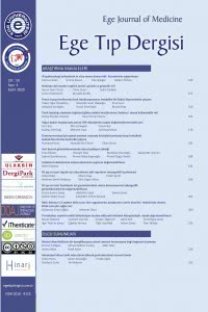Significance of percutaneous nephrostomy in children
- ISSN: 1017-7698
- Yayın Aralığı: Yılda 3 Sayı
- Başlangıç: 2018
- Yayıncı: Ege Üniv. Tıp Fak.
Figen OKSEL, Nilgün SAATÇİ, Sema ASENA, Hüseyin HAKERLERLER, Baha TANELİ
Does serum zinc level have any role in the response to hepatitis B vaccine in hemodialysis children?
Sevgi MİR, Ferah SÖNMEZ, Caner KABASAKAL, Tijen ÖZACAR
Pregnancy and child bearing in a liver transplant patient
Resmiye ORAL, METE AKISÜ, Nilgün KÜLTÜRSAY, EROL TAVMERGEN, Yaman TOKAT
Significance of percutaneous nephrostomy in children
Nejat AKSU, Hakan ERDOĞAN, Ahmet ARIKAN, Ali SAYAN, B. Sıtkı İSENLİK, Önder YAVAŞCAN, Savaş KANSOY
Orthognathic surgical treatment in adults with skeletal malocclusions: Case reports
Mast cell count in premenopausal and postmenopausal myometrium
Canan SAYLAM, METE ERTÜRK, İsmail Mete İTİL, Mert KAZANDI, Serdar ÖZŞENER, Niyazi AŞKAR
Cadmium: Exposure unawares and the breast milk
Figen OKSEL, Faik KOYUNCU, Adem PİRİM, Nurten ÇETİNER, Ali ONAĞ, Baha TANELİ
LÜTFİYE KANIT, Şakire PÖĞÜN, Serdar DEMİRGÖREN, Berrin OKUR, Fatma Z. KUTAY
